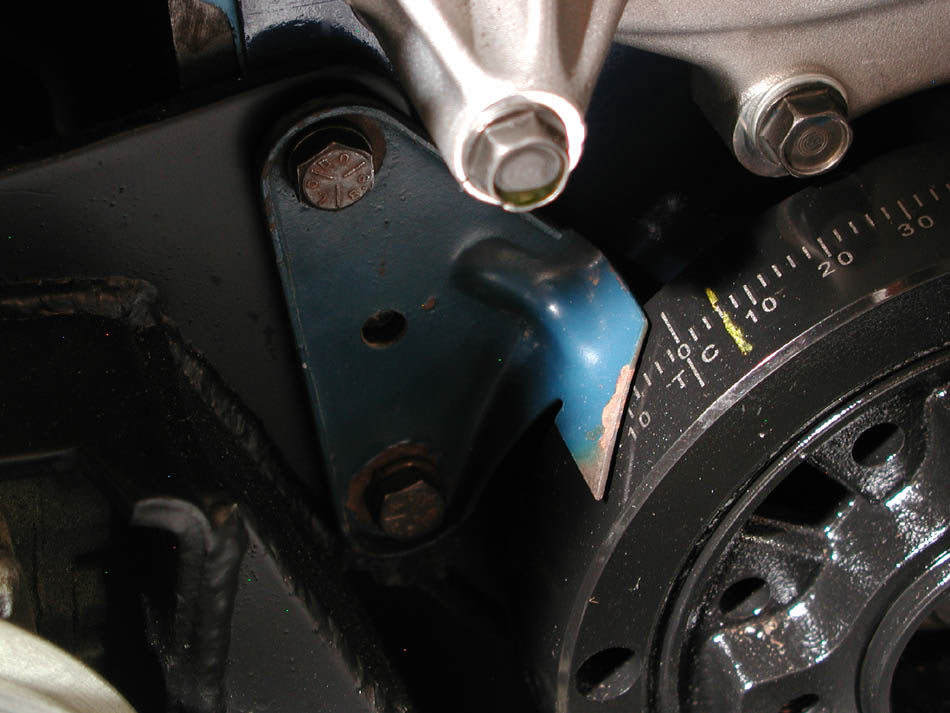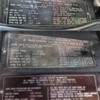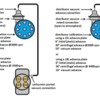It's like other things, simple on the surface, complicated if you want to be sure. If your plugs are too cold they foul up despite a too lean mixture. Here's a paste of that short section of my book, hope it helps:
-------------------
Spark plug reading
Reading spark plugs is another window into the engine, to what goes on in there. Or to put it a bit more philosophically, the plugs are the windows to the soul of the engine. It's an important methodology because it can tell you so much, but it's also a difficult methodology, because it can easily be misinterpreted, especially with the bad gas we are subjected to today. To read the plugs I’ll discuss the following three steps:
1. Getting the proper heat range plug
2. Reading plugs for engine problems
3. Reading plugs to help tune the engine
The biggest challenge in reading plugs is that if you read a plug and it looks rich, there are two possible causes. One is that the plug itself is too cold while the jetting of the carb is fine, the second is that the plug is the correct heat range, but the carb is jetted too rich. These two scenarios require very different remedies, so it's critical to find out which it is.
On 1. Getting the proper heat range plug
If your engine is stock, you can read in the manuals which plugs to use. If they read rich or lean it's because the carb needs tuning. But be careful if you change plug brand, make sure the translation from the old brand's heat range to the new is accurate. Don't trust the guy in the local shop selling it to you; it could be that he sells you what he has on the shelf.
If your engine is a performance engine, having improper heat range plugs can kill the engine. If in doubt, throw them out and buy new ones, because plugs are cheap.
If your engine is stock with the addition of a nitrous system, you have to go two heat ranges colder, the same for a blown engine. Remember that on American spark plugs, the higher the number, the hotter the plug, while on European and Japanese plugs it's the other way around.
It's better to have too cold a plug than too hot. So if in doubt, go for the colder one. When it then constantly fouls, and you know your engine is in good tune, buy the next hotter range until it doesn't foul anymore. So what's bad about a hot plug? It sounds great, ‘hot’ is generally a good word and it sounds like it could aid combustion. But if it's too hot the electrodes burn away too fast, and even worse it can glow red hot and cause pre-ignition/detonation which can kill your engine. Having too cold a plug doesn't include such risks; the only risk is that the plugs foul.
So here's how to find the right plugs if your engine is not stock. Drive a while on the freeway (remember that new plugs may take 500 miles to get their color). If the engine from time to time pings or detonates, try colder plugs until it goes away. If not, then stop somewhere safe and pull the plugs. If they are really black, try hotter plugs until that condition goes away. When you get to the right heat range plug, there will be one tell-tale indication that can't be confused with carb adjustment. When the heat range is right, there will be a narrow bluish ring around the electrode, approximately 1mm from the tip. If the heat range is right and the carb mixture is right you'll be able to see it right away, but if the heat range is right and the carb mixture is too rich, you’ll have to clean the plug first.
Always buy copper plugs or similar, as their effective heat range is wider, so they're more forgiving if you don't have the exact right heat range, and even more important, they can better handle the different chores of keeping the plugs clean when idling and not getting too hot when accelerating full throttle. Platinum plugs are fine in modern fuel-injected cars, but will quickly foul in a carbureted car because they demand a 100% perfect mixture at all times, which even the best-tuned carburetor simply can’t deliver.
On 2. Reading plugs for problems
Yes, I know, it's not fun looking for problems. But if there are problems, they have to be remedied before you can tune the engine. Let's try to look at the serious symptoms one at a time:
• Electrodes are melted: Over-hot condition, the mixture way too lean. Fix immediately or expect to kill the engine on the next run down the track if it's not already dead
• Electrodes are bent or broken: Mechanical interference of the worst kind. Did you just put high dome pistons in it? Or longer thread plugs? If you find that the gap between the electrodes tends to decrease over time, they could be just kissing the pistons at high rpm
• The plug looks wet: If it's gasoline, this can normally be fixed by tuning the carb (smell it), but if it's oil, forget about tuning, you need to rebuild your engine first
• Small bubbles on center electrode and a shiny look on the side electrode and porcelain: Too hot plug, see, see On 1 above
• Small black or silver deposits on the porcelain: This is either bad or very bad, it's a sign of detonation. If it's black, it is the carbon deposits that are in every combustion chamber that have been rattled loose and are then melted onto the porcelain. Remember that detonation is like hitting the piston with a hammer. If it's silver-like it's even worse, then it's part of your piston being thrown all over the combustion chamber, maybe it's time for a rebuild...
• Plugs look different: At the start you have to pull all plugs, not just one. Later when it comes to fine-tuning and you know you don't have fuel distribution problems, one plug will be enough. If you pull all plugs (and remember which spark plug goes where) and see differences, this has to be addressed. It could be idle mixture or jetting that needs to be changed on one side. If some plugs look much leaner than the rest there could be a vacuum leak close to them. I had a boat with a blower and a single Holley Dominator. Cylinders 1 and 8 were always leaner than the rest. I tried turning the Dominator 90 degrees, I modified the intake manifold, I tried all sorts of jet combinations in the Dominator, but none of it helped the situation. In the end I bit the bullet, bought two smaller Holley blower carbs and an adapter for them to sit on top of the blower, did some jetting, and only then were all eight cylinders the same
On 3. Reading plugs to help tune the engine
So with the proper heat range plugs and no serious problems, we can start reading the plugs to help us tune the engine. The ideal plug will look something like this: The porcelain is chocolate color (leaded fuel) or very light brown, almost white (unleaded fuel), the tips of the electrodes (center electrode and side electrode) are grey; the rest of the side electrode is straw color. There will be some deposits on the plug, but only dry and low gloss, no shiny and no wet deposits. And you can see the narrow bluish ring around the electrode, approximately 1mm from the tip, the strongest indicator for having the right heat range plugs.
If the mixture is too rich the plug will be sooty brown/black. If the tips of the electrodes are grey, then the plug is still firing, so it's a mixture issue, but if the electrode tips are also sooty brown/black, the plug doesn't fire every time, and that has to be fixed before the plug can be properly read. The sooty brown/black stuff may disappear when the plugs start firing again. If it's only one or two plugs looking like this, it's very likely an ignition issue that has to be solved first.
If the mixture is too lean, and you use leaded gas, the porcelain will be all white and the center electrode tip can be white as well. If you use unleaded gas, things are more difficult to interpret, because an engine in perfect tune will almost not color the porcelain. So a lean looking plug could be alright. Examine that plug even closer, because if the engine is running lean, you definitely want to know about it and remedy it. Look for a white center electrode, signs of overheating like bubbles and burnt electrodes to help find a too-lean condition.
Since we’re trying to build a performance car more than an economic daily driver, I recommend again to go on the rich side. And since it's difficult to see the difference between okay and lean when using unleaded gas, that's another reason to go a little too rich; it gives you peace of mind. So my recommendation is to be a little rich, have plugs that are somewhat sooty brown, at least not white. Then you know you're alright and you have a margin of error on your side.
-----------------------
Good luck with it










